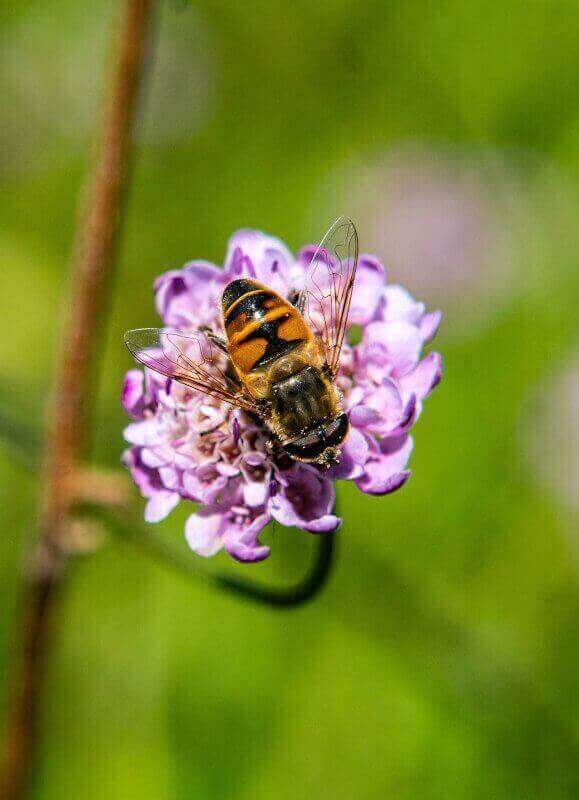👋 Click the mic button to talk to Alfred, the Todd's Seeds Gardening/Sprouting Expert – Feel free to ask him anything!
Ask Virtual Todd Anything - Click the Mic
Have you ever wondered how some plants just seem to thrive when planted together? It’s all thanks to companion planting, a gardening technique that harnesses the power of symbiotic relationships between different plants. By strategically pairing certain plants together, you can enhance their growth, improve pest control, and even boost flavor in your garden. In this article, we’ll explore the fascinating world of companion planting, uncovering the secrets behind this age-old practice and discovering how it can transform your gardening experience.

Understanding Companion Planting
Definition of companion planting
Companion planting is a gardening technique where different plants are placed in close proximity to benefit each other. It involves selecting plants that have mutually beneficial relationships, such as repelling pests, attracting beneficial insects, or providing shade or support to other plants. By strategically positioning plants, you can create a harmonious and symbiotic environment in your garden.
Historical background
Companion planting is not a new concept. In fact, it has been practiced for centuries by various cultures around the world. Native American tribes, for example, have long employed companion planting techniques in their traditional agricultural practices. The “Three Sisters” method, which involves planting corn, beans, and squash together, is a famous example of companion planting. Similarly, in ancient Rome, people would plant aromatic herbs alongside vegetables to keep pests at bay.
Basic principles of companion planting
There are several basic principles to keep in mind when practicing companion planting. First, consider the plants’ growth habits and ensure they are compatible in terms of space and light requirements. Second, select plants with complementary characteristics, such as those that have diverse root systems or release different chemical compounds into the soil. Lastly, consider the timing of planting to maximize the benefits of companion plants. Some plants may thrive when planted together during specific stages of growth.
Benefits of Companion Planting
Improving plant health and growth
Companion planting can greatly improve the overall health and growth of your plants. Some plants, known as dynamic accumulators, have deep root systems that draw up nutrients and minerals from deep in the soil. By interplanting these species with shallow-rooted plants, which are not strong nutrient competitors, you can ensure your plants receive a balanced and continuous supply of nutrients. Additionally, certain plants release natural compounds that repel pests or inhibit the growth of harmful pathogens, effectively protecting neighboring plants.
Increasing crop yield
Companion planting is also known to increase crop yields. When plants with different growth habits are combined, they can utilize space more efficiently, preventing weeds from taking over. Furthermore, by creating a diverse ecosystem in your garden, you can attract a wider range of beneficial insects, such as bees and ladybugs, which aid in pollination and control pest populations. The increased pollination and natural pest control can result in higher crop yields and healthier plants.
Natural pest control
One of the key advantages of companion planting is its ability to naturally control pests. By strategically planting certain species, you can repel or deter pests without resorting to harmful pesticides. For example, marigolds are known to release a scent that repels a wide range of insects, including aphids, nematodes, and whiteflies. By interplanting marigolds with susceptible vegetable crops, you can effectively protect them from these pests. Similarly, planting herbs like basil and mint in close proximity to susceptible plants can deter pests with their strong aromas.
Types of Companion Plants
Plants that repel pests
Certain plants are known for their ability to repel or deter pests. For example, planting onions or garlic near susceptible vegetables can deter pests like aphids, carrot flies, and cabbage worms. Nasturtiums, with their vibrant flowers, not only add beauty to your garden but also repel aphids, whiteflies, and squash bugs. Another excellent choice is chives, which can help safeguard against fungal diseases when planted near tomatoes and cucumbers.
Plants that attract beneficial insects
Another category of companion plants includes those that attract beneficial insects. For instance, planting dill, fennel, or parsley attracts predatory wasps, which feed on common garden pests like aphids and caterpillars. Yarrow is another valuable companion plant that attracts hoverflies and lacewings, which prey on aphids and other harmful insects. By creating an inviting environment for these beneficial insects, you can maintain a balanced ecosystem and minimize the need for chemical pesticides.
Plants that provide shade or support
Some plants serve as excellent shade or support companions. Tall-growing plants like sunflowers or corn can provide much-needed shade for heat-sensitive and shade-loving plants. They act as natural sunscreens, protecting smaller plants from the intense summer sun. Additionally, vine plants like cucumbers and beans can be trained to climb up trellises provided by taller plants like corn or sunflowers, maximizing vertical space and reducing the risk of diseases caused by soil-borne pathogens.
Companion Planting Combinations
Popular companion plant combinations
Several companion plant combinations have proven to be successful in many gardens. For example, the three sisters combination of corn, beans, and squash is a classic example of interplanting. The corn provides a tall structure for the beans to climb, while the squash’s large leaves provide shade to suppress weed growth. Another popular combination is tomatoes and basil. The aromatic oils released by basil help repel pests that commonly affect tomato plants, such as tomato hornworms and whiteflies.
Companion planting for different crops
Different crops have unique companion planting requirements. For instance, potatoes grow well when planted alongside beans, which act as natural nitrogen fixers and enrich the soil. Cabbage and other members of the Brassica family, on the other hand, thrive when planted with aromatic herbs like thyme and rosemary, as they deter cabbage worms and caterpillars. It is essential to research specific companion planting recommendations for each crop to maximize their growth and health.
Companion planting in container gardening
Companion planting can be successfully applied to container gardening as well. When selecting plants for container combinations, consider their growth habits, light requirements, and nutrient needs. For example, you can pair a tall plant like a tomato with a trailing plant like nasturtiums to maximize space. Additionally, consider using herbs or flowers with strong scents, like lavender or chamomile, to repel pests naturally. Container gardening allows you to create a mini-ecosystem where plants support and complement each other within a confined space.

Complementary Planting Techniques
Succession planting
Succession planting involves sowing or planting new crops as soon as the previous ones are harvested. By staggering your planting dates, you can ensure a continuous supply of fresh produce throughout the growing season. Additionally, succession planting can disrupt pest life cycles, making it harder for them to establish and cause damage to your crops. It also allows you to make the most of your garden space and maximize productivity, as you can utilize different companion planting combinations with each new planting.
Interplanting
Interplanting refers to the practice of growing multiple plants within the same area simultaneously. This technique allows you to maximize limited garden space and create a more diverse and productive garden ecosystem. For example, you can plant fast-growing radishes between slower-growing crops like tomatoes to make use of the available space. Interplanting also enhances soil health by diversifying root systems and reducing soil erosion. However, it’s important to choose companion plants that have compatible growth requirements to avoid competition for resources.
Trap cropping
Trap cropping involves planting specific plants to attract pests away from your main crops. By sacrificing a few plants, you can lure pests to a more desirable location, minimizing damage to your main crops. For example, planting marigolds as a trap crop can redirect pests like whiteflies or nematodes away from vegetables. Trap cropping can be particularly effective when combined with natural predators, such as beneficial insects, which can further reduce pest populations. This technique offers an environmentally friendly and targeted approach to pest control.
Dos and Don’ts of Companion Planting
Choosing compatible plants
When practicing companion planting, it is crucial to choose plants that have compatible growth requirements and characteristics. Consider factors such as light and water requirements, growth habits, and nutrient needs. For example, avoid planting shade-loving plants next to taller plants that would block their access to sunlight. Similarly, avoid combining plants that are highly competitive for nutrients or water, as this can hinder their growth and overall performance.
Avoiding problematic plant combinations
While companion planting offers numerous benefits, some plant combinations are best avoided. For instance, avoid planting members of the same plant family together, as they are often susceptible to similar pests and diseases. Similarly, certain plants can inhibit the growth of others through allelopathy, where they release chemicals that prevent other plants from growing. Examples of such plants are black walnut trees, which release juglone, a chemical that inhibits the growth of many garden plants.
Considerations for different growing conditions
Different growing conditions require specific considerations when implementing companion planting. In regions with hot summers, for example, it is important to select companion plants that can tolerate heat and provide shade to more sensitive crops. On the other hand, in cooler climates or areas with shorter growing seasons, selecting companion plants that can help extend the growing season and protect against early frosts is beneficial. Understanding your specific growing conditions will allow you to make informed choices and optimize the benefits of companion planting in your garden.

Common Misconceptions about Companion Planting
Companion planting as a standalone solution
While companion planting offers many advantages, it is important to acknowledge that it is not a standalone solution for all gardening challenges. It should be used in conjunction with other practices, such as proper soil preparation, regular watering, and responsible pest management. By adopting a holistic approach to gardening, which combines various techniques, including companion planting, you can create a more resilient and healthy garden environment.
Companion planting replacing conventional gardening practices
Companion planting should not be seen as a replacement for conventional gardening practices but rather as a complementary technique. It can enhance the effectiveness of conventional practices by promoting biodiversity, reducing the reliance on chemical pesticides, and improving overall plant health. It is important to continue implementing good gardening practices, such as crop rotation, balanced fertilization, and proper watering, while incorporating companion planting into your gardening routine.
Scientific evidence and limitations
Although there is extensive anecdotal evidence supporting the benefits of companion planting, scientific research on its effectiveness is still limited. While some studies have shown positive results, many variables, such as climate, soil conditions, and plant species, can influence the outcomes. Additionally, the efficacy of companion planting may vary depending on the region and specific gardening practices. It is important to use companion planting techniques with an understanding of their limitations and continue to explore and adapt them based on personal experiences and local conditions.
Implementing Companion Planting in Your Garden
Planning and layout
Implementing companion planting starts with careful planning and layout of your garden. Consider the space available, the plants you want to grow, and their compatibility. Sketch out a garden plan that takes into account plant growth habits, sun exposure, and any specific companion planting recommendations for your chosen crops. This will help you visualize how the plants will interact and ensure a harmonious and productive garden.
Intercropping techniques
Intercropping refers to the practice of growing different types of plants in close proximity, allowing them to mutually benefit from each other’s presence. There are different intercropping techniques you can employ, such as strip intercropping, where rows of different crops are interplanted, or mixed intercropping, where plants are grouped together in the same growing space. Experiment with different intercropping techniques to find what works best for your garden and the specific plants you are growing.
Maintenance and monitoring
As with any gardening practice, companion planting requires regular maintenance and monitoring. Keep an eye on your plants for signs of pests or diseases, and take appropriate action if necessary. Regularly water and fertilize your plants as needed, ensuring that the nutrient needs of both companion plants are met. Remove any weeds that may compete with your plants for resources. By staying vigilant and providing proper care, you can create an environment where companion plants can thrive and effectively support each other’s growth.

Alternative Approaches to Companion Planting
Permaculture principles
Permaculture is an approach to gardening and agriculture that emphasizes sustainability and self-sufficiency. It involves creating self-sustaining ecosystems by observing and emulating patterns found in nature. Permaculture principles can be applied to companion planting by focusing on creating diverse and resilient garden ecosystems that mimic natural systems. This holistic approach encourages the interconnection of plants, animals, and the surrounding environment, promoting long-term sustainability and productivity.
Polyculture systems
Polyculture systems involve growing multiple crops together in a way that mimics natural ecosystems. Instead of planting large monoculture fields, where a single crop is grown on a large scale, polyculture systems promote diversity and reduce the risk of crop failures caused by pests or diseases. By interplanting a variety of crops, you can create a more balanced and self-sustaining system that requires fewer inputs and reduces environmental impacts. Polyculture systems incorporate the principles of companion planting on a larger scale, creating complex and resilient agricultural systems.
Agroforestry practices
Agroforestry practices involve integrating trees, shrubs, and other perennial plants with agricultural crops. By combining both woody and herbaceous plants, agroforestry systems offer multiple benefits, such as increased biodiversity, improved soil health, and enhanced resilience to climate change. Companion planting plays a crucial role in agroforestry, as it helps support the growth of both the trees and the associated crops. This integrated approach offers the opportunity for sustainable food production, while also promoting the regeneration of natural ecosystems.
Conclusion
Companion planting is a valuable technique that can enhance the health, productivity, and sustainability of your garden. By harnessing the natural relationships between plants, you can create a harmonious and resilient ecosystem where plants support and benefit from each other. From repelling pests to increasing crop yield and providing natural shade, companion planting offers numerous advantages for gardeners of all levels. While scientific evidence may be limited, the anecdotal evidence, historical background, and practical experience of gardeners worldwide highlight the benefits of companion planting. By following the principles, experimenting with different combinations, and adapting to your specific growing conditions, you can successfully implement companion planting in your garden and reap its rewards for years to come.